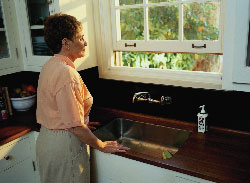Make Homes Safer
There is no question that for many Americans, home is where the heart is. Contrary to popular stereotypes, most older adults do not choose to pack up and move to warmer climates in their retirement years. According to a recent AARP study, nearly ninety percent of adults 50 and older want to remain in their current home and community. And [...]


